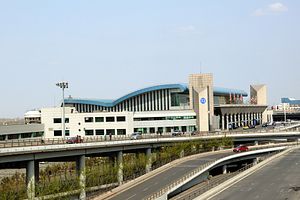China’s Silk Road ambitions have already sparked plans and the construction of economic development zones and infrastructure on the anticipated routes. The Silk Road project promises to breathe life into the poorer overland regions that have been less prominent due to their relative geographical isolation. Xinjiang and other northern provinces include foreboding terrain, while Yunnan, though picturesque, is also difficult to traverse due to its mountainous landscape. Kashi in Xinjiang demonstrates the most recent construction of an economic development zone, while other plans and construction are also under way.
Kashi Comprehensive Bonded Zone in Xinjiang passed inspection on January 8, and represents Xinjiang’s second bonded zone and its first comprehensive bonded zone. Fifteen companies have signed an agreement for investment in the zone, amounting to 3.035 billion RMB. Eight of the enterprises are local Kashgar enterprises. This new economic zone represents ongoing efforts by China’s leadership to enhance economic development in China’s western region. While the growth rate of central and western regions has been higher than that of the eastern region in recent years, there continues to be a large development gap between eastern and central and western areas.
Expansion of economic development zones in Xinjiang province also represents evolution of China’s New Silk Road. China’s New Silk Road is an effort to enhance economic and diplomatic relations, and a bullet train connecting Lanzhou in central China to Urumqi in Xinjiang, western China, will buttress the western connection within the nation itself. The rail network may be extended to CIS countries and the Middle East. An overland Silk Road extending from Yunnan to Southeast Asian nations will radiate in the opposite direction. This route will connect Kunming in Yunnan to Myanmar, Vietnam, Laos and Thailand.
The northern Silk Road represents an opportunity to transport resources from Western China, and countries West of China, to the east, and development of areas along the road may entice migration within China from east to west. Several cities have sought to be a part of this project. Zhengzhou in Henan province lies close to the planned start of the New Silk Road in Xi’an, and plans to fast-track its development plans for its airport, high speed rail, and other projects, aiming to become an aviation and economic hub. Horgos, on the border with Kazakhstan, a land port to central Asia, was approved in 2014 as a city and is in the process of developing a special economic zone.
Other areas have already received investment in anticipation of increased activity along the New Silk Roads. In the northern region, Lanzhou New Area was established in September 2012 and is a planned city for 500,000 residents; it is attempting to become a high-tech research center. A high-speed railway, the Lanxin railway, linking Urumqi in Xinjiang with Xining in Qinghai along the New Silk Road, was opened less than one month ago. In the southern region, a long road was sculpted through the hilly region between Kunming, capital of Yunnan, to the Laotian border in 2008. A railway line running from Kunming to Hekou, on the border of Vietnam, is expected to be finished this year. An expressway between Kunming and Ruili, on the border of Myanmar, is in the process of being built.
Prior development along the northern New Silk Road has lagged since this region is extremely barren and mountainous, crossing the Gobi Desert, encompassing many mountain passes, and moving through a landlocked region far from any sea. Development in the southern region has been equally challenging given the highly mountainous terrain. Creation of economic development zones and infrastructure will build up these areas.
As these underdeveloped regions grow, additional development measures will need to be taken, especially regarding the provision of water in the northern pass. Attention must also be paid to enhancing the education and skills of the poor farmers and herders on the planned northern and southern Silk Roads to ensure that development is inclusive, not just profitable for larger enterprises and resource users on the east coast. If carried out in a balanced way, the New Silk Road could have a big impact on cities dotted along the corridor.

































